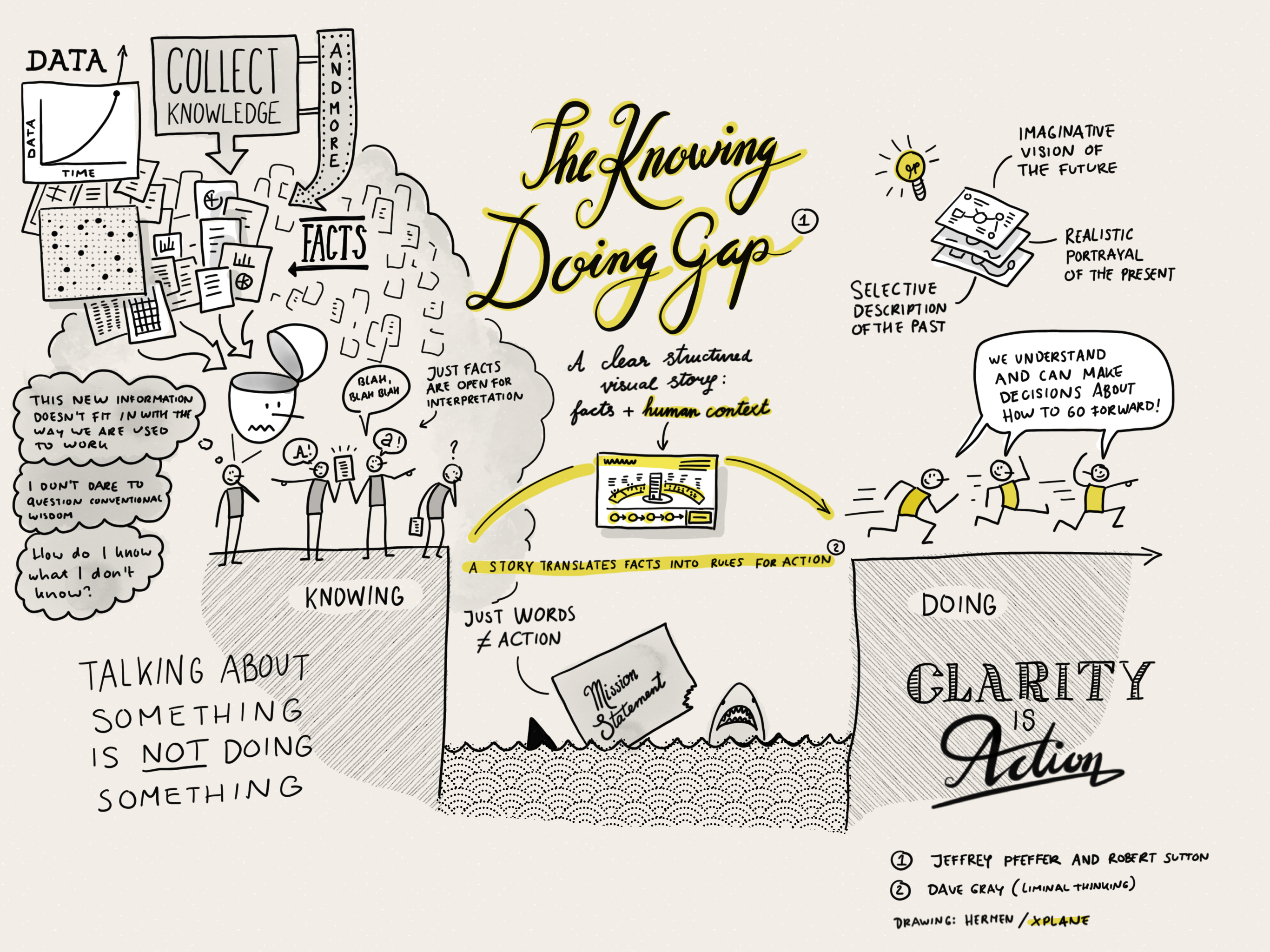In 1982, Buckminster Fuller noted that the amount of human knowledge doubled every 100 years, a phenomenon he dubbed the Knowledge Doubling Curve. This trend is accelerating. According to IBM research, humans have created more data in the past two years than in the entire history of the human race.
Many smart entrepreneurs have used these new opportunities to innovate and disrupt. On the flipside, this explosion of data and knowledge puts new demands on established organizations to keep up with the dizzying pace of innovation. Although large organizations have access to more of this data than anyone else, they struggle to turn that information into an advantage.
What’s stopping large organizations from embracing this knowledge and turning it into action?
They can’t move from talking to doing.
According to research by Jeffrey Pfeffer and Robert Sutton, one of the main hurdles is the tendency to “equate talking about something with actually doing something about it.” In many organizations, once a decision is made, employees and leaders often don’t take the extra step to create an action plan for the inevitable additional work.
They’re stuck in the complexity.
The increase in information resources increased the amount and complexity of data shared. The usual tools to communicate and align on this increased complexity are insufficient.
They don’t understand that organizations are made of people.
Employees understand things differently. Meetings, reports, and mission statements can be interpreted differently by different people. They can even be misleading and create a self-reinforcing spiral within the current beliefs of an organization. Or even worse, people think they are aligned while they are not.
It doesn’t have to be this way. Organizations need to move their team from just knowing what to do to implementing a real plan.
How can organizations move from talk to action?
Look through the lens of the audience.
Establishing your audience in an early stage will allow you to stay focused on goals for real people and not lose yourself in the data. It will create meaningful space where data and knowledge are interrelated to form context for your audience.
Create a human-centered story.
Put people at the center of the story. When people understand, they can make informed decisions to take actions, actions that drive results. (At XPLANE we call this CUDAR, the understanding chain: Clarify > Understand > Decide > Act > Results.)
Get aligned.
Aligning on a path forward and communicating each move to all stakeholders and clients is critical. You may find disagreement at first, but even clarity on points of disagreement is an important foundation. Iterate and co-create until everybody is aligned around a common story. The creation of the story together with the story itself bridge the gap and lead to a clear path forward.
